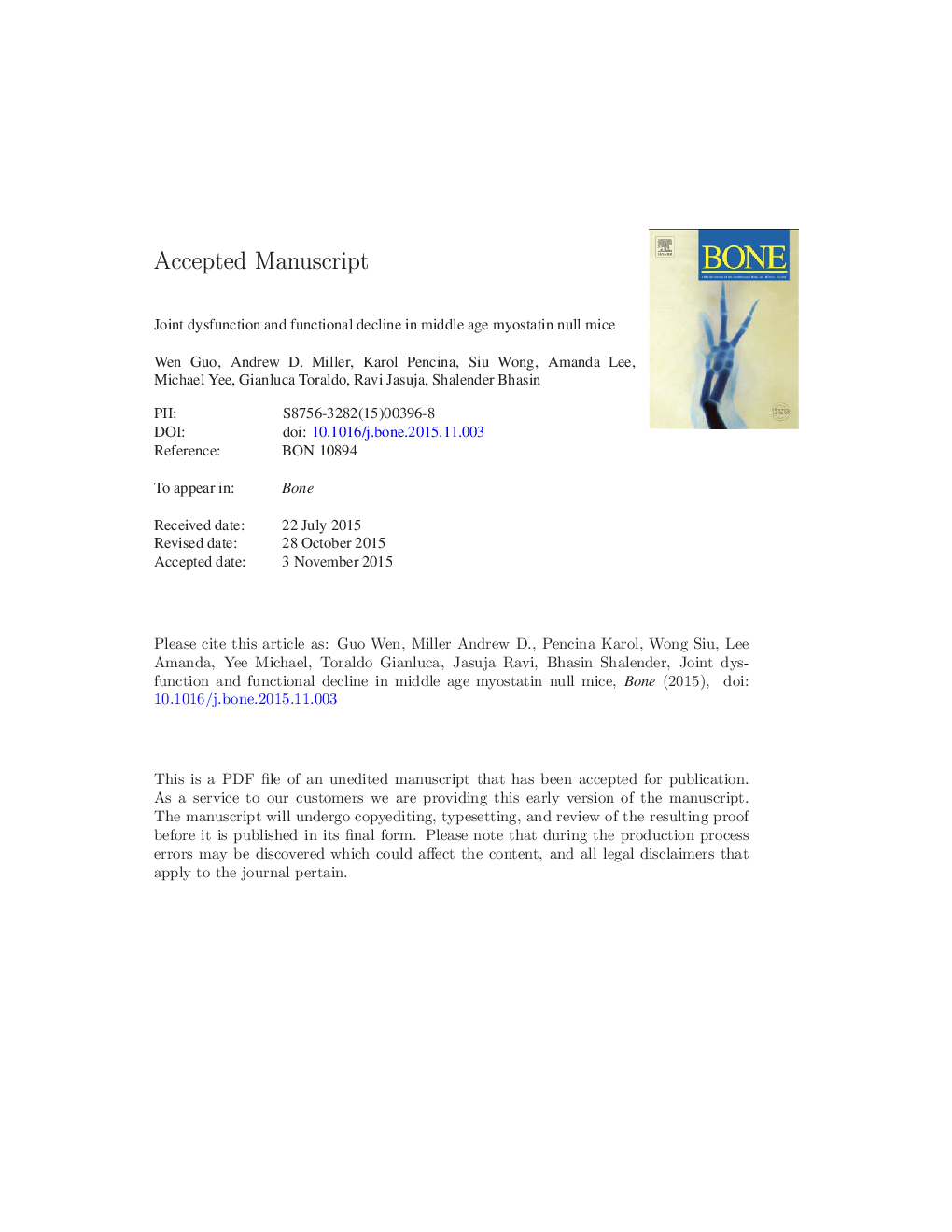| Article ID | Journal | Published Year | Pages | File Type |
|---|---|---|---|---|
| 5889130 | Bone | 2016 | 29 Pages |
Abstract
Since its discovery as a potent inhibitor for muscle development, myostatin has been actively pursued as a drug target for age- and disease-related muscle loss. However, potential adverse effects of long-term myostatin deficiency have not been thoroughly investigated. We report herein that male myostatin null mice (mstnâ/â), in spite of their greater muscle mass compared to wild-type (wt) mice, displayed more significant functional decline from young (3-6Â months) to middle age (12-15Â months) than age-matched wt mice, measured as gripping strength and treadmill endurance. Mstnâ/â mice displayed markedly restricted ankle mobility and degenerative changes of the ankle joints, including disorganization of bone, tendon and peri-articular connective tissue, as well as synovial thickening with inflammatory cell infiltration. Messenger RNA expression of several pro-osteogenic genes was higher in the Achilles tendon-bone insertion in mstnâ/â mice than wt mice, even at the neonatal age. At middle age, higher plasma concentrations of growth factors characteristic of excessive bone remodeling were found in mstnâ/â mice than wt controls. These data collectively indicate that myostatin may play an important role in maintaining ankle and wrist joint health, possibly through negative regulation of the pro-osteogenic WNT/BMP pathway.
Keywords
Related Topics
Life Sciences
Biochemistry, Genetics and Molecular Biology
Developmental Biology
Authors
Wen Guo, Andrew D. Miller, Karol Pencina, Siu Wong, Amanda Lee, Michael Yee, Gianluca Toraldo, Ravi Jasuja, Shalender Bhasin,
